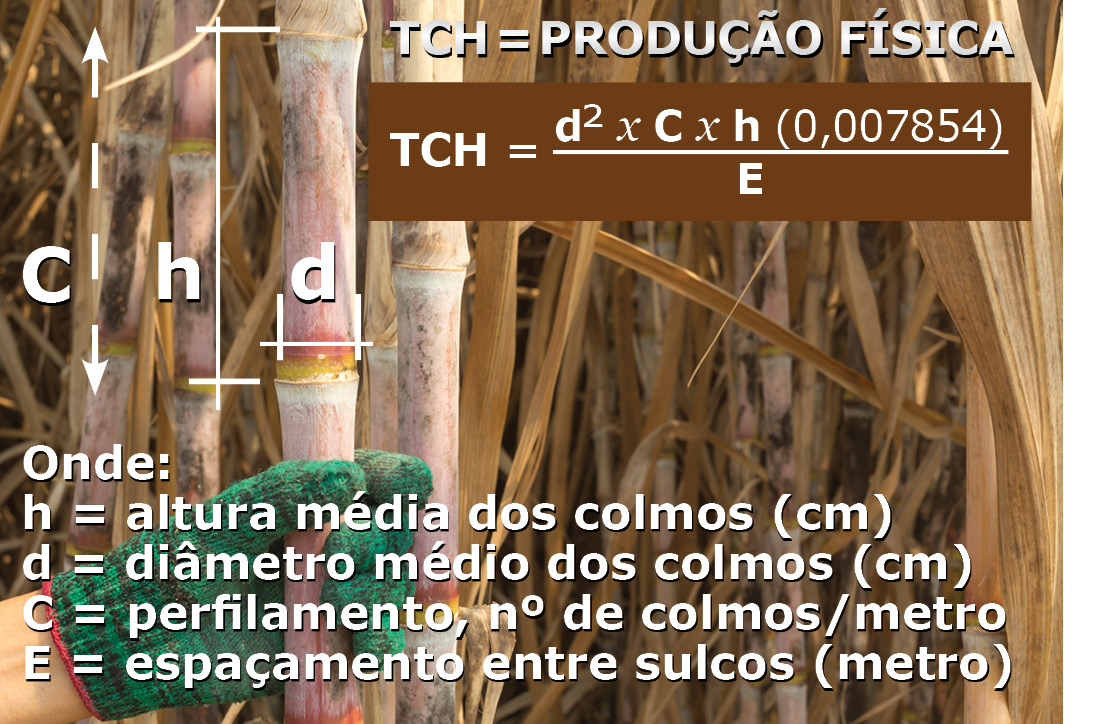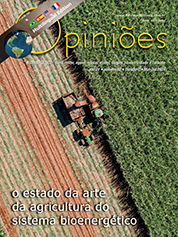Marcos Guimarães de Andrade Landell
Diretor Geral do Instituto Agronômico de Campinas/IAC
OpAA80
Como atingir e manter a produtividade acima das 100 toneladas por hectare
A partir de 1990, uma nova demanda se impôs à canavicultura brasileira: a colheita mecânica crua. Essa nova prática alterou drasticamente o ambiente de produção, acrescendo significativo volume de material orgânico nos talhões de cana.
Em um primeiro momento, a mecanização dos processos de colheita e plantio foi muito negativa para a produtividade agrícola, ampliando os riscos para a sustentabilidade econômica do negócio “cana”. Discussões e exercícios se seguiram tentando responder a como tornar viável o plantio e também a colheita dos canaviais. A primeira resposta veio com a conclusão: precisamos aumentar o TCH (Tonelada de Cana por Hectare) dos canaviais.
Nas nossas análises, identificamos uma redução expressiva da produtividade da cana-planta (primeiro ciclo). Produtividades de 125 t/ha em cana-planta na época do plantio manual foram substituídas por TCH de 90 a 110 t/ha de uma maneira geral em áreas de plantio mecanizado. Isso acontecendo apesar do esforço dos programas de melhoramento genético da Ridesa, CTC e IAC, que apresentavam quase todos os anos novas opções varietais de maior potencial biológico para os produtores.
Foi nesse momento que nos debruçamos nessa análise para identificar as causas dessa baixa produtividade e fomos estabelecendo estratégias para mitigação dos efeitos deletérios. Componentes da produtividade agrícola: A produtividade de cana é construída a partir dos componentes de TCH e expresso em massa (toneladas de colmos). O componente TCH pode ser estimado pelo número de colmos por hectare multiplicado pelo peso médio dos colmos.
 O que é “Cana de três dígitos”? São os canaviais que atingem produtividade (TCH) superior a 100 toneladas por hectare na média dos cinco primeiros cortes. A produtividade de cana pode ser denominada “Patrimônio biológico”. Como construir um elevado patrimônio biológico? Como existe uma alta correlação da “população de colmos” com o TCH, temos de dar grande destaque no momento da formação de um novo canavial, escolhendo variedades que tenham como uma das principais características uma boa população de colmos. Essas variedades deverão ser plantadas em uma área onde todas as práticas de nutrição dos solos e da proteção de plantas deverão ser praticadas com excelência.
O que é “Cana de três dígitos”? São os canaviais que atingem produtividade (TCH) superior a 100 toneladas por hectare na média dos cinco primeiros cortes. A produtividade de cana pode ser denominada “Patrimônio biológico”. Como construir um elevado patrimônio biológico? Como existe uma alta correlação da “população de colmos” com o TCH, temos de dar grande destaque no momento da formação de um novo canavial, escolhendo variedades que tenham como uma das principais características uma boa população de colmos. Essas variedades deverão ser plantadas em uma área onde todas as práticas de nutrição dos solos e da proteção de plantas deverão ser praticadas com excelência.
Dessa forma, devemos buscar de maneira obcecada a excelência no planejamento e na execução do plantio. Assim sendo, dentre os passos para os ganhos transversais, podemos citar a manutenção ou até ganhos na população de colmos ao longo dos cortes. A estratégia da Matriz do Terceiro Eixo, que preconiza a antecipação dos cortes nos ciclos mais novos (primeiro, segundo e terceiro cortes), tem auxiliado muito nesse objetivo. Outro fator relevante é a utilização de variedades com boa adaptação ao plantio mecânico (denominamos de variedades facilitadoras) e que tenham “habilidade” de um bom perfilhamento. Isso invariavelmente estabelece populações acima de 75.000 colmos/hectare para quase todas as variedades.
Existem, no entanto, variedades que atingem população em cana-planta acima de 90.000 colmos. O Programa Cana IAC tem-se esmerado há 30 anos para obter variedades que tenham um número elevado de colmos. Nesses últimos sete anos, o IAC lançou duas variedades que têm esse perfil: IACCTC07-8008 e IACCTC07-7207. Elas chegam a atingir populações de 110 a 130 mil colmos/ha. Em áreas comerciais, elas têm alcançado produtividades altas tipo 140 até 230 t/ha no sequeiro.
A redução do déficit hídrico com uso da matriz tridimensional (3º eixo): A partir de 1997, o Programa Cana IAC estabeleceu uma rede experimental com apoio de inúmeras empresas em forma de network, para avaliar genótipos da fase final do programa de melhoramento genético de cana do IAC e, assim, identificar as novas variedades para a área comercial das empresas.
Essa rede foi estabelecida com base no conhecimento dos solos/ambientes de produção e época/terço de colheita (1º terço, 2º terço e 3º terço), que, nas condições do Estado de São Paulo, coincidia com o Outono (1), Inverno (2) e Primavera (3). Assim sendo, definimos uma matriz de ambientes com dois fatores (Ambiente e Época de Colheita) e três níveis. Essa matriz, que chamamos de Bi-dimensional, acabou sendo adotada por muitos produtores que assim evitavam coincidir os ambientes edafoclimáticos mais restritivos (solos piores) com a época de menor disponibilidade de água nos solos (no caso, na primavera).
A partir do conhecimento gerado, Antônio Carlos M. de Vasconcelos, em sua tese de doutorado (2002), na qual detalhava a dinâmica do sistema radicular de um cultivar híbrido de cana-de-açúcar, deixou claro que as raízes se aprofundavam no perfil do solo a cada ano de cultivo e, assim, canaviais mais antigos apresentavam uma maior tolerância em relação ao déficit hídrico (DH). Dessa maneira, sentimos a necessidade de incluir na nossa Matriz um terceiro fator que foi o Ciclo do canavial, correlacionando os canaviais mais antigos a uma proteção maior do DH para a planta em cultivo. A esse terceiro fator denominamos Terceiro Eixo, gerando assim uma Matriz Tridimensional (três fatores com três níveis). A aplicação do conceito do Terceiro Eixo na prática fez com que ocorresse uma mitigação do DH.
A redução do DH tem relação com a produtividade agrícola, e, assim, podemos considerar que uma redução de DH de 100mm ao longo de um ciclo de produção de um canavial poderá redundar em aumentos de TCH (tonelada de colmos por hectare) na ordem de 8 a 13 t/ha, com a resposta dependendo do ambiente de produção e do potencial biológico da variedade cultivada.
O esforço na ciência agronômica é direcionado à geração e transferência de tecnologias que auxiliem as culturas agrícolas a aproveitarem da melhor maneira a água disponível no solo e a se adaptarem às condições adversas. Nesse cenário, destaca-se, no setor sucroenergético, a Matriz do Terceiro Eixo, modelo de mitigação de déficit hídrico desenvolvido pelo Instituto Agronômico (IAC-APTA), da Secretaria de Agricultura e Abastecimento do Estado de São Paulo, que amplia em cerca de 30% a produtividade agroindustrial. Este salto representa um aumento de 23 toneladas por hectare, rendimento que deverá levar a um acréscimo de 46 milhões de toneladas de cana somente na canavicultura paulista em breve. O incremento na renda do produtor é de R$ 6 bilhões por ano.
Entendemos assim que, com essas estratégias, podemos construir uma elevada produtividade de cana no seu primeiro ciclo (cana planta) e que a mitigação do déficit hídrico resultará em uma menor desconstrução do TCH ao longos dos cortes, permitindo que venhamos a atingir uma produtividade de três dígitos ao longo dos cinco primeiros cortes.




